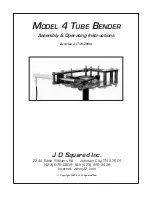
2-11
IM AQ1210-01EN
Setting Up the OTDR Feature
1
2
3
4
5
6
7
8
9
10
11
App
Index
Approximation Method
When the instrument calculates splice loss, it extrapolates straight lines. These straight lines are
known as approximation lines.
There are the following two kinds of approximation lines.
• Least squares approximation (LSA)
• Two point approximation (TPA)
LSA
The instrument calculates the loss between two points by using the least squares method on all the
data between the two points (between 1 and 2).
This method has the following characteristics.
Advantage: Because all the data between the two points is used, errors in the calculated value
are small. Fluctuations in the calculated values are reduced, and highly reproducible
values can be obtained.
Disadvantage: If a large reflection or splice loss is present in the section whose loss is being
calculated, those values are also included in the calculation, so large errors result.
If no events such as reflections and splice losses are present in the section being calculated, the
LSA provides a value that has a smaller degree of error than the TPA.
1
2
Approximation line
calculation range
TPA
The instrument uses the difference between the levels of the two specified points to calculate the
loss. The level of fluctuation and reproducibility in the calculated value may vary greatly. If events
such as reflections and splice losses are present in the section being calculated, the TPA provides a
value that has a smaller degree of error than the LSA.
Approximation line
calculation points
1
2
2.2 Analysis (Analysis) Conditions















































